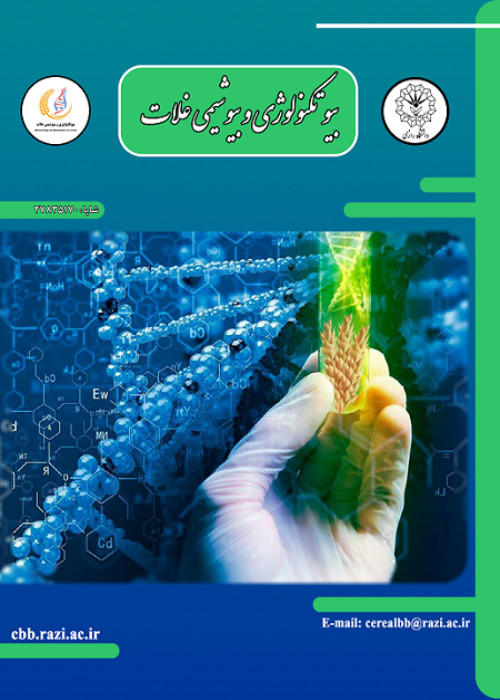The effect of nitrogen application methods on some quantity and quality traits of grain of bread wheat commercial cultivars under rainfed and supplementary irrigation conditions
Nitrogen is a determining element in nutrition, plant growth, and its quantitative and qualitative performance. Considering the high cultivated area of dryland wheat in the country and the economical importance of this crop in dryland conditions, it is necessary to consider any solution to optimize the quantity and quality of this product.
a strip split plot design based on RCBD with three replicates was conducted under rainfed and supplemental irrigation conditions during two cropping seasons (2016-17 and 2017-18) to evaluate the effect of Nitrogen (urea) applied by different foliar application treatments and top dressing fertilizer on grain yield, grain protein content, Zeleny number, and gluten index of wheat, Experimental treatments were: A: control (without application of N), foliar application of urea during booting, booting + grain filling and grain filling stages as the main plot, B: wheat cultivars as sub-plots, C: top dressing fertilizer including application and non-application (control) in strip factor were considered.
The results of a combined analysis of variance and mean comparison showed that foliar spraying of urea fertilizer in all three growth stages significantly increased grain yield, nitrogen content, the percentage of grain protein and grain hardness, Zeleny number and grain gluten index. The application of top dressing fertilizer in both rainfed and supplementary irrigation conditions on grain yield, grain protein and gluten index was also significant. The highest gluten index in rainfed conditions (24.08%) and supplementary irrigation (16.19%) was related to foliar application of urea during the grain filling stage. The highest index of gluten, grain hardness and Zeleny number in both rainfed and supplementary irrigation conditions belonged to Rijaw variety. Rijaw variety had the highest value with 27.3 and Azar-2 variety had the lowest gluten index value with 18.6. Foliar application of urea during the grain filling stage had the most contribution to the increase of grain protein and the control treatment had the least contribution. The highest amount of grain yield in rainfed conditions was 2907 and in supplementary irrigation conditions were 3957 kg, which compared to the control treatment (no application of vinegar fertilizer), increased the grain yield by 19 and 16% in both rainfed and supplementary irrigation conditions, respectively.
The results of this research showed that foliar application treatments and top dressing fertilizer in both rainfed conditions and supplementary irrigation were effective in improving quality traits. In this study, supplementary irrigation led to a significant increase in grain yield compared to rainfed conditions.
- حق عضویت دریافتی صرف حمایت از نشریات عضو و نگهداری، تکمیل و توسعه مگیران میشود.
- پرداخت حق اشتراک و دانلود مقالات اجازه بازنشر آن در سایر رسانههای چاپی و دیجیتال را به کاربر نمیدهد.




